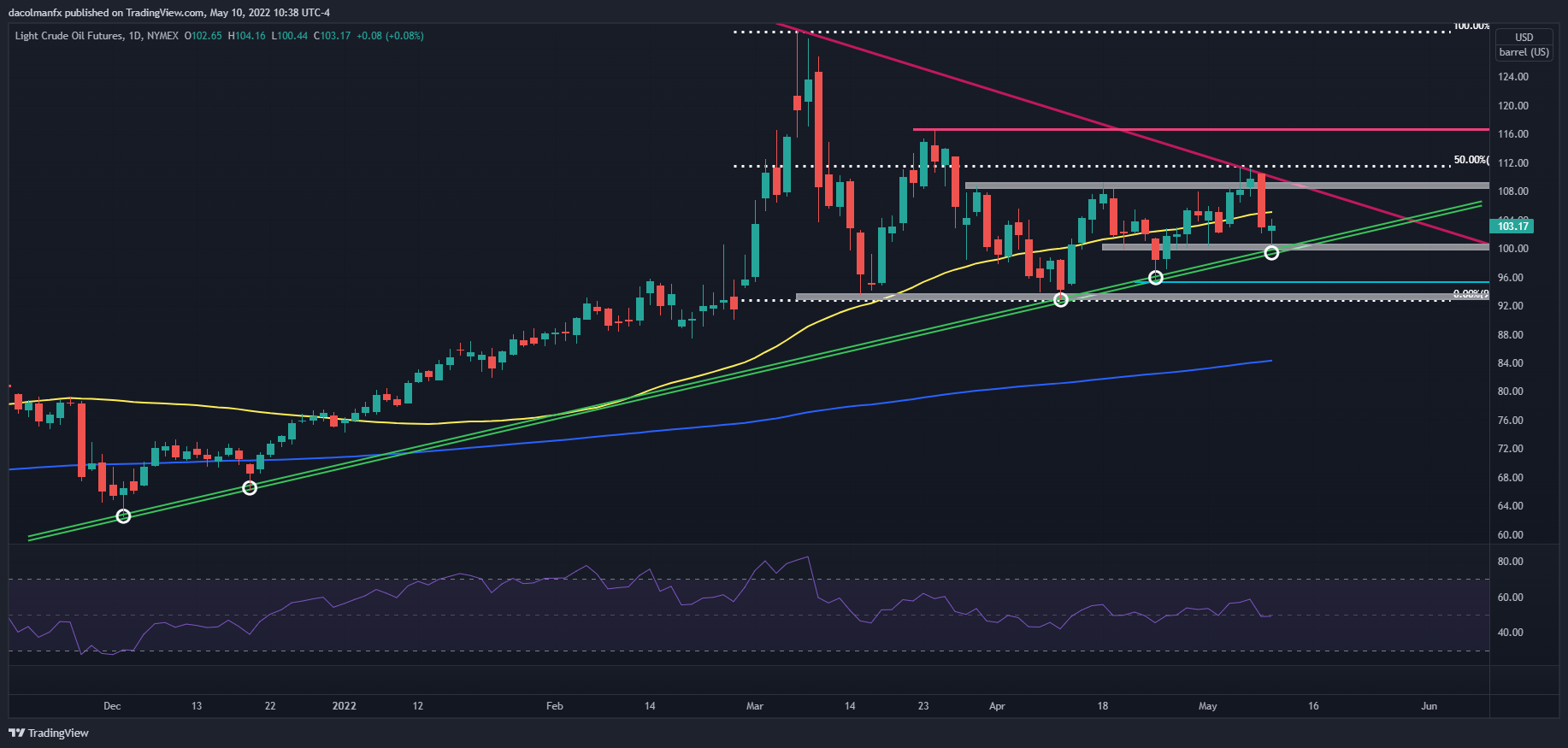Oil Prices Struggle To Find Footing, But The Medium-Term Outlook Remains Bullish

Crude oil prices (WTI) prices started the week on the back foot and suffered their biggest drop since late March, down more than 6% intraday, weighed down by demand concerns on account of the lockdowns in China and growing speculation that the world could be heading towards a recession. On Tuesday, selling pressure eased in the early trade, but picked up again in the afternoon, with WTI futures down more than 2.5% to ~$100 per barrel, as traders remain reluctant to jump back in to take on long positions with many unknowns still lingering.
Despite the recent weakness and turbulence, oil maintains a bullish medium-term outlook due to supply and demand imbalances in global markets. Although the current COVID-19 wave and related lockdowns in China may create near-term headwinds and fuel volatility, the situation should improve in the coming weeks once the mobility restrictions are lifted.
Judging by the downward trend in new coronavirus infections and the decline in community transmission in Shanghai, the government could begin easing shelter-in-place measures by the end of the month or, at the latest, early June should historical patterns prevail. Once this occurs, oil imports should accelerate ahead of the high-demand summer season, supporting fossil fuel prices.
There is also another bullish driver on the horizon: the European Union's plan to bar Russian oil imports over its attack on Ukraine. The embargo is still being negotiated amid opposition from several member states, such as Hungary and Bulgaria, but both countries have shown a willingness to compromise if they are granted exemptions and manage to secure alternative energy sources. In any case, the expectation is that there could be an agreement to move forward on the new sanctions package in the second half of May. Details are being finalized, but once fully implemented over six months, the phased-in ban could displace some 3.5 million barrels of crude and refined products from Russia, exacerbating the market deficit by the end of the year.
In terms of technical analysis, WTI prices are sitting above trendline support near the psychological $100 level at the time of this writing. If bulls retake control of price action and spark a meaningful rebound, initial resistance appears at $105.00, the 50-day simple moving average, followed by $108.00. On further strength, the focus shifts up to $111.55, the 50% Fibonacci retracement of the March/April decline. On the other hand, if oil extends the recent correction and breaks below $100 per barrel on weekly closing prices, selling interest could gain steam, paving the way for a move towards $95.35, followed by $93.00, the April’s low.
CRUDE OIL TECHNICAL CHART
(Click on image to enlarge)

Disclosure: See the full disclosure for DailyFX here.



